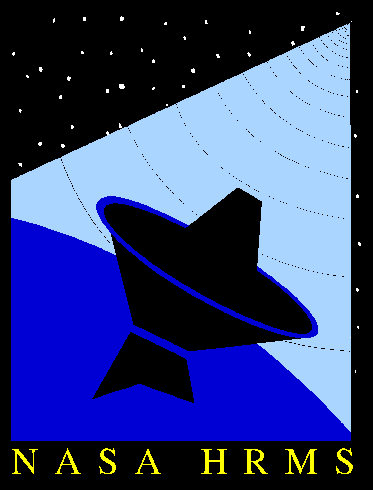 HRMS Quarterly Report 93-1
HRMS Quarterly Report 93-1 HRMS Home Page
HRMS Home Page SETI Institute Welcome Page
SETI Institute Welcome Page
The National Aeronautics and Space Administration (NASA) is bringing modern technology to bear on an age-old question: Are we alone in the Universe? Are there other planetary systems in orbit around any of the 300 billion other stars in the Milky Way galaxy and do any of them have Earth-like planets that support intelligent life? Recent discoveries in astronomy and physics suggest that planetary systems are not rare exceptions but are the natural result of the star formation process and may number in the billions in our galaxy alone. Radio astronomers have detected and identified dozens of molecules in space that are necessary to the chemistry of life. These discoveries support the hypothesis that life may have developed in other solar systems.
Recent technological advances in remote sensing techniques have made it possible to conduct comprehensive searches for planetary systems of other stars. One of the strategies involves the use of advanced signal processors in combination with large radio telescopes to explore the microwave radio spectrum for signals that might originate from other planetary systems with life-supporting planets. The objective is a systematic survey of a portion of the spectrum where the background noise (static) is minimal. One of the quietest frequency bands is the "microwave window," which lies between 1,000 and 10,000 megahertz (MHz). Because the quiet characteristic of these frequencies would be discernible throughout the galaxy, it is reasonable to assume that others wishing to establish interstellar communication might choose this band.
The High Resolution Microwave Survey (HRMS) is conducted by the Solar System Exploration Division of the NASA Office of Space Science and Applications. It is part of a program to use a variety of astronomical techniques to search for evidence of planets around other stars. The survey is managed by the NASA Ames Research Center (ARC) at Moffett Field, California, and is being jointly carried out by ARC, the Jet Propulsion Laboratory (JPL) in Pasadena, California, participating universities, and the Deep Space Network. The survey plan utilizes two complementary search modes: an all-sky survey element and a targeted search element. Both elements have developed state-of-the-art digital spectrum analyzers and signal processing equipment that carry out the observations and data processing activities automatically.
The All-Sky Survey, conducted by JPL, will observe the entire celestial sphere over the 1,000 to 10,000 MHz frequency range, plus spot bands up to 25,000 MHz, to explore the possibility that there may be civilizations transmitting strong signals, possibly as interstellar beacons. The sky survey will initiate operations using the 34-meter (112-ft) diameter class of antennas of the Deep Space Network.
The Targeted Search, conducted by Ames Research Center, is a high sensitivity search that will look for weak signals originating near stars like our Sun that are within 100 light-years distance (978 trillion miles) from Earth. The objective is to test the hypothesis that advanced technologies are using microwave frequencies, and that our largest, present day radio telescopes and the Targeted Search receiver are sensitive enough to detect these signals. Star clusters and some nearby galaxies will also be observed. The search frequency range is 1,000 to 3,000 MHz. Some of the large radio telescopes that will be used are the National Science Foundation's 305-meter (1,000-ft) diameter antenna at Arecibo, Puerto Rico, the Australian 64-meter (210-ft) diameter antenna at Parkes, Australia, and the National Radio Astronomy Observatory's 42-meter (140-ft) diameter antenna at Green Bank, West Virginia.
The HRMS inaugurated its observational phase at 1900 hours Universal Time on 12 October 1992 at the NASA Goldstone Deep Space Communications Complex in California and the Arecibo Observatory in Puerto Rico. In a coordinated program, the Arecibo antenna pointed at the star Gliese 615.1A and the Goldstone antenna began to scan a small area of sky that included the position of the target star.
During the year following the inauguration of observations, the Sky Survey team continued observations at Goldstone on a part-time basis with a prototype system while continuing to build the operational system with sixteen times the capability. The Targeted Search team returned from Arecibo after the scheduled two month observing session and immediately disassembled the system for upgrades and expansion.
In October 1993, both HRMS teams were making good progress toward completing their operational observing systems. Meanwhile in Washington, the Congress was not making progress in trimming the budget. After voting for the Space Station and the Advanced Solid Rocket Motor, they voted against the HRMS (about $12 million) thus cutting nearly 0.1% of NASA's budget.
Scientists and engineers from the SETI Institute formed the core of the Targeted Search team. As a non-profit organization, the SETI Institute was in a unique position to rescue a significant portion of the $58 million of taxpayers' investment in SETI R&D, and use it for the intended purpose. First, the Institute secured an agreement with NASA for a long-term loan of the partially built Targeted Search System. Then the Institute raised $7.5 million to complete the expansion of the system and deploy it to Australia. The new project, Project Phoenix, conducted observations at the Parkes Observatory, from February 2 through June 6, 1995. Current annual funding of more than $3 million is covering additional upgrades to the system and observations at Green Bank in 1996.
 HRMS Quarterly Report 93-1
HRMS Quarterly Report 93-1 HRMS Home Page
HRMS Home Page SETI Institute Welcome Page
SETI Institute Welcome Page